X Marks the Spot? NASA Discovers Bizarre X-Shaped Structures in Earth’s Upper Atmosphere — and Scientists Warn They Could Be Interfering with Radio and GPS Signals
It seems as if Earth is trying to communicate with other planets without even knowing it.
NASA has discovered huge alphabetic formations on Earth as seen from space: X-shapes and C-shapes.
According to experts, they consist of charged particles in an upper part of the Earth’s atmosphere, the so-called ionosphere.
The ionosphere – where our planet’s atmosphere and space meet – allows radio signals to travel great distances.
This ‘alphabet soup’ could therefore potentially disrupt communication and navigation signals, which could have consequences for activities on Earth.
NASA’s satellite has revealed unexpected C- and X-shaped formations in an electrified layer of gas high above our heads called the ionosphere
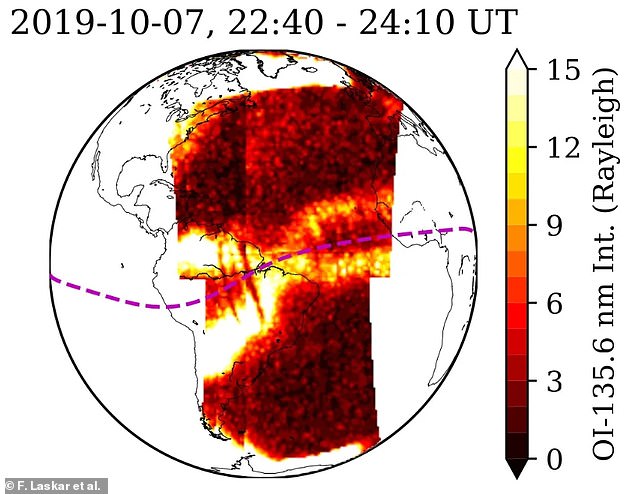
Observations from NASA’s GOLD mission show that on October 7, 2019, the peaks merge into an X shape. (The colors indicate the intensity of ultraviolet light emitted, with yellow and white indicating the strongest emission.)
The shapes were detected by NASA’s Global-scale Observations of the Limb and Disk (GOLD) satellite, which was launched in January 2018.
“Who would have thought that Earth’s upper atmosphere was an alphabet soup?” NASA said in a statement.
‘The GOLD mission has revealed unexpected C- and X-shaped formations in an electrified layer of gas high above our heads called the ionosphere.
“Their surprising appearances demonstrate that we still have much to learn about the ionosphere and its effects on the communications and navigation signals that pass through it.”
The shapes are created in the ionosphere, a region approximately 50 to 400 miles (80 to 640 kilometers) above the Earth’s surface that has been described as “the dynamic interface between Earth and space.”
The ionosphere becomes electrically charged during the day when sunlight shines on our planet and its energy knocks electrons away from atoms and molecules.
This creates a ‘soup’ of charged particles, also called plasma, which allows radio and GPS signals to travel over great distances.
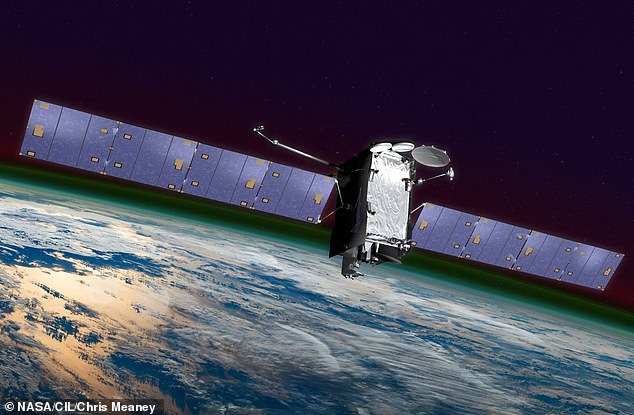
The shapes were detected by NASA’s Global-scale Observations of the Limb and Disk (GOLD) satellite, shown here in an artist’s impression
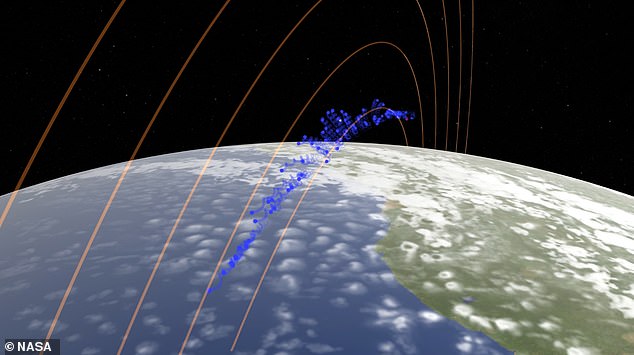
The ionosphere becomes electrically charged during the day when sunlight hits our planet and its energy knocks electrons off atoms and molecules. This creates a ‘soup’ of charged particles known as plasma, which allows radio signals to travel over great distances (pictured here)
Near the Earth’s equator, these charged particles are guided upward and outward along magnetic field lines, creating two dense bands of particles north and south of the equator, which scientists call “crests.”
According to NASA, these buds merge into an X shape when viewed from space. This shape resembles the shape of chromosomes in human cells.
Although these alphabetic shapes have been observed before, GOLD now finds them in places and at times where scientists didn’t expect them.
GOLD has already revealed that the peaks form an X-shape after a solar eruption or massive volcanic eruption.
But now GOLD has seen an X shape multiple times when there were no disturbances – what scientists call “quiet time.”
So, according to the team, something else must be going on when forming these shapes.
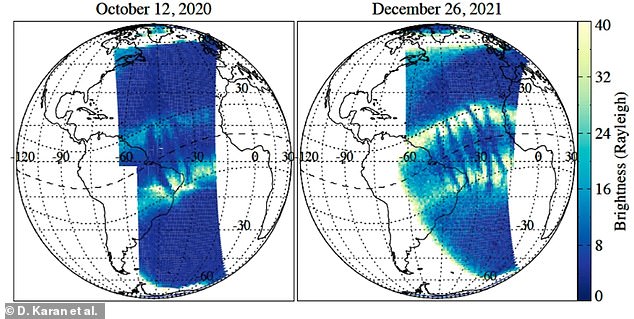
Images from NASA’s GOLD mission show C-shapes appearing close together in the ionosphere on October 12, 2020 and December 26, 2021
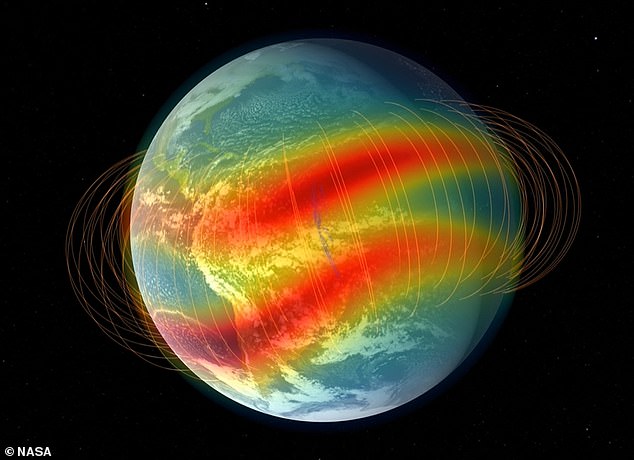
Near the Earth’s magnetic equator, charged particles are guided up and out along magnetic field lines, creating two dense bands of particles north and south of the equator that scientists call “crests” (shown in their normal alignment)
“The X is strange because it implies there are many more local driving factors,” said Dr. Jeffrey Klenzing of NASA’s Goddard Space Flight Center in Greenbelt, Maryland.
‘This is to be expected during extreme events, but the fact that we see it during the ‘quiet period’ suggests that activity in the lower atmosphere is significantly influencing the structure of the ionosphere.’
Computer models suggest that X could form when changes in the lower atmosphere pull plasma downward.
Meanwhile, the C-shapes are likely formed by strong turbulence in the atmosphere – such as a whirlwind, wind shear, or tornado-like activity.
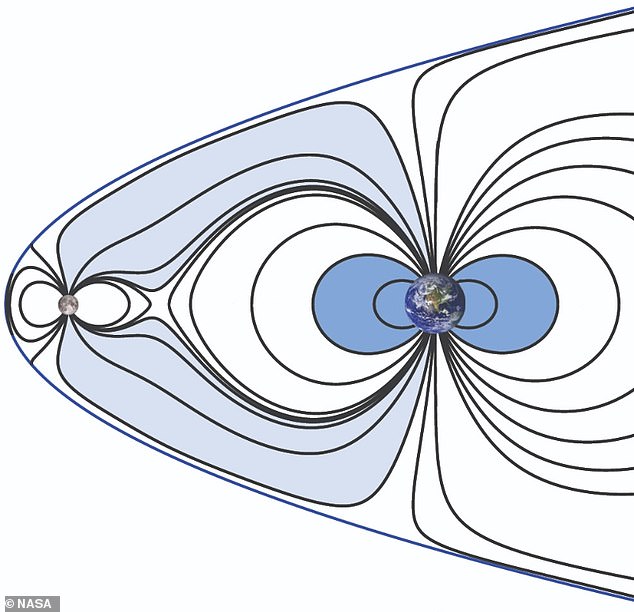
Near the Earth’s magnetic equator, charged particles are guided up and out along magnetic field lines, creating two dense bands of particles north and south of the equator that scientists call crests. As night falls and the sun’s energy wanes, low-density pockets of plasma called bubbles can form in the ionosphere. Because of their varying densities, the crests and bubbles can interfere with radio and GPS signals.
Because the ionosphere plays an important role in enabling radio communications, the team says it is “really important” to figure out exactly why the shapes form.
“If there’s a vortex or a very strong shear stress in the plasma, it will completely deform the plasma in that region,” said Deepak Karan of the Laboratory for Atmospheric and Space Physics in Boulder, Colorado.
‘With such a strong disturbance, the signals are completely lost.’
The team concludes that their findings “could play a crucial role in the development of space weather forecasting capabilities.”
An article describing the findings has been published in the Journal for Geophysical Research: Space Physics.
